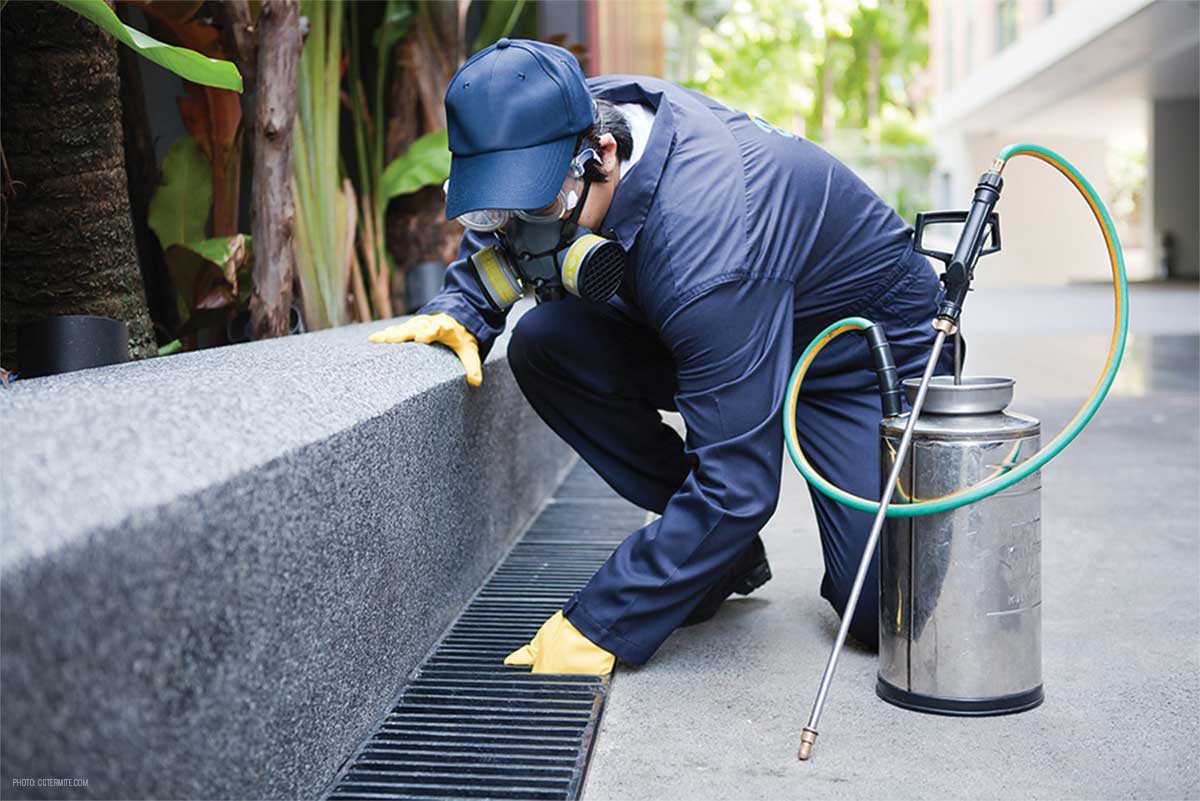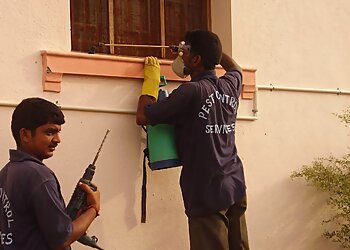A Comprehensive Overview to the Various Kinds Of Pest Control Approaches
With the myriad of bug control approaches readily available, it can be overwhelming to discover the most reliable service for a particular parasite issue. In this thorough overview, we will explore these different kinds of parasite control approaches, providing insights right into their applications and benefits. By the end, you will have a clearer understanding of which method may be the best fit for your parasite control demands.
Chemical Parasite Control Methods

One typical type of chemical parasite control is insecticides. Insecticides target details pests, such as mosquitoes, termites, or ants, and can be utilized both indoors and outdoors.
An additional type of chemical parasite control is rodenticides. These are chemical compounds designed to regulate populaces of rats, such as rats and computer mice.
Weed killers, additionally called herbicides, are another kind of chemical insect control technique. Herbicides are designed to selectively kill undesirable plants, referred to as weeds, without creating injury to desirable plants. They are typically used in farming, landscape design, and gardening to control the growth of unwanted vegetation.
While chemical parasite control techniques can be very efficient in removing insects, it is very important to utilize them sensibly and follow safety guidelines. Overuse or misuse of chemical pesticides can have adverse influence on human wellness and the setting. For that reason, it is vital to use these techniques properly and think about alternative bug control techniques whenever possible.
Biological Insect Control Methods
Organic parasite control methods involve the usage of living microorganisms or all-natural materials to manage and manage pest populaces. Unlike chemical techniques, which typically depend on synthetic pesticides, organic control approaches utilize the natural opponents of insects to manage their populations. This technique is taken into consideration even more eco-friendly and sustainable, as it reduces the usage of harmful chemicals and lessens the danger of pesticide resistance.
One extensively used biological parasite control approach is the introduction of natural killers or bloodsuckers. Ladybugs are presented to control aphids, while particular wasp types are launched to target caterpillars. These killers and bloodsuckers eat pests, lowering their numbers and protecting against problems.
One more biological control method is making use of microorganisms. Certain bacteria, infections, and fungi can be employed to infect and kill details parasites. The microorganism Bacillus thuringiensis is commonly utilized to regulate caterpillars, as it produces toxins that are lethal to these insects.
Organic control approaches can also include the usage of scents or all-natural substances that interfere with the mating patterns of bugs. By hindering their reproduction, these techniques help to reduce pest populations over time.
While biological insect control approaches are normally effective, they might call for longer durations to attain wanted outcomes compared to chemical techniques. Furthermore, mindful consideration must be provided to the selection and release of natural enemies to avoid unexpected injury to beneficial microorganisms or environments.
Physical Insect Control Techniques
To efficiently take care of and manage pest populations, different bug control methods called physical pest control methods are employed. These methods involve making use of physical barriers, catches, or tools to stop bugs from accessing or damaging home. One usual physical insect control approach is using screens or webs to keep pests out of buildings or gardens. These screens are normally made of great mesh product that permits air flow while protecting against insects from entering. Another physical insect control approach is the installment of fences or wall surfaces to maintain bigger parasites, such as deer or bunnies, out of gardens or agricultural fields. These obstacles physically block the insects' accessibility to the location, lowering the capacity for damages. In addition, catches and devices can be utilized to record or drive away pests. Sticky catches can be put in areas where bugs are a problem, and the bugs come to be stuck to the adhesive surface area. Ultrasonic devices can likewise be made use of to discharge high-frequency noises that are undesirable to bugs, creating them to leave the area. Physical pest control techniques are an eco friendly option to chemical pesticides, as they do not rely upon using dangerous chemicals.
All-natural Insect Control Techniques
Natural pest control techniques supply a sustainable and environmentally friendly method to handling and eliminating bugs. These techniques prioritize making use of all-natural materials and organic representatives, minimizing the read the full info here demand for chemical pesticides that can harm the environment and human health and wellness. Among one of the most usual all-natural bug control techniques is organic control. This entails introducing natural killers or bloodsuckers to prey on or parasitize the bugs. Ladybugs are typically presented to gardens to manage aphid populations. An additional natural approach is making use of repellents originated from plants. Certain plants, such as marigolds, lavender, and pepper mint, release fragrances that push back parasites like insects, flies, and ants. Additionally, cultural control techniques can be employed to avoid and take care of pest invasions. This includes appropriate cleanliness, normal upkeep, and advertising biodiversity in the garden. For instance, revolving plants, getting rid of yard debris, and encouraging natural killers can assist prevent the buildup of parasites. By taking on these all-natural insect control techniques, people and communities can successfully manage insects while minimizing the negative effect on the environment and human wellness.
Integrated Parasite Administration (IPM)
Integrated Pest Management (IPM) is a thorough and systematic technique to pest control that incorporates visit the website various approaches and methods to efficiently take care of insects while minimizing using chemical pesticides. IPM aims to maintain pest populaces below the economic injury degree by using a mix of cultural, organic, and chemical control approaches.
Cultural control methods entail modifying the setting to make it less beneficial for pests. This can include practices such as crop turning, correct sanitation, and making use of immune plant ranges. By developing visit the site undesirable conditions for parasites, social control methods can substantially lower parasite populaces.

Chemical control methods are used as a last hotel in IPM. They entail the targeted and cautious use of pesticides to take care of insect populaces. Unlike standard bug control methods, IPM intends to minimize making use of chemical pesticides by using alternate techniques.
Integrated Pest Management (IPM) is an aggressive method that concentrates on long-lasting insect monitoring instead of depending only on responsive steps. By integrating multiple control methods, IPM offers a much more lasting and ecologically pleasant approach to pest control.
Conclusion
It talked about chemical, organic, physical, and natural parasite control approaches, as well as the integrated pest administration technique. By comprehending these various techniques, people can make enlightened decisions on which pest control approach is most suitable for their specific demands and choices.